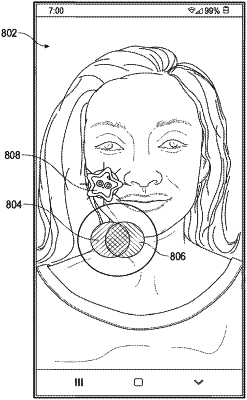| CPC G06F 3/016 (2013.01) [G06F 3/014 (2013.01); G06F 3/0488 (2013.01); H04L 65/1089 (2013.01)] | 21 Claims |

|
1. A system comprising:
a processor; and
a memory having instructions thereon, when executed by the processor, causes the system to perform operations comprising:
causing a virtual reality (VR) interface for a communication session to be displayed on a first user interface of a first head-wearable apparatus and on a second user interface of a second head-wearable apparatus, wherein the communication session is between a plurality of head-wearable apparatuses including the first head-wearable apparatus and the second head-wearable apparatus;
detecting a first touch input from a first VR input device coupled to the first head-wearable apparatus and a second touch input from a second VR input device coupled to the second head-wearable apparatus;
monitoring a location of the first touch input within the first user interface and a location of the second touch input within the second user interface;
determining a distance between the location of the first touch input within the first user interface and a location on the first user interface corresponding to the location of the second touch input within the second user interface;
causing the first VR input device and the second VR input device to generate a haptic feedback response based on the distance, wherein the haptic feedback response increases in intensity or speed as the distance decreases and decreases in intensity or speed as the distance increases; and
in response to determining that the distance is below a predetermined threshold, causing the first user interface and the second user interface to generate an augmentation to the VR interface, wherein the augmentation comprises a visual effect and a sound effect.
|